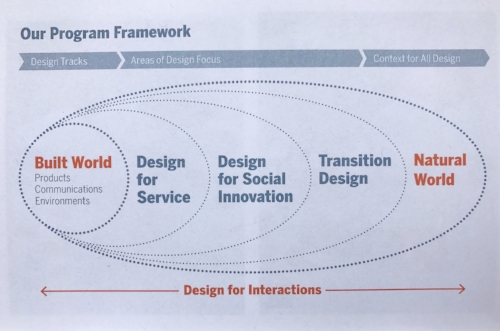What Is Design?
This is the burning question that even seasoned designers have a tough time answering.
I know this because I spoke to dozens of them while researching graduate schools. When I asked designers how they explained their profession to their mom or brother, they usually laughed and admitted it was tough. "Design is a lot of different things", they'd assert, before concluding, “it has to do with the process."
Ever since I started telling people about my plan to attend graduate school, I've taken a stab at answering the question myself. Over the past six months, I have found that regardless of whether I am speaking with friends, family or colleagues, the initial dialogue around design usually goes something like this:
Me: Yeah, so I'm going back to school for design.
Other Person: Oh cool! What kind of design?
Me: Interaction design.
Other Person: Cool! So...what exactly is interaction design?
Me: Well, it's focused on designing human-centered services and products.
Other Person: Hmm…what exactly does that mean?
Me: Great question. Rather than focusing solely on graphic or visual design, we’ll be designing things that people can interact with – and we’ll also be doing a lot of systems problem solving using the design process.
I've had this conversation more than two dozen times and I get a lot of squinted eyes and slow nods. It didn’t take me long to realize that Design is not an easy field to make sense of over a casual conversation.
Why?
Design is everything! It’s the phone you use, the steering wheel in your car, the organizational structure of your workplace and the service you receive at the bank. Design is not just aesthetics. It’s a method for solving problems.
This simple, yet significant realization, has led me to constantly question what design means today and how I can best talk about it. Luckily, Carnegie Mellon’s Design School is a perfect place to get started on such a quest.
Slap a Definition On It
Carnegie Mellon’s curriculum prepares students to enter a variety of design-related disciplines. That said, the graduate school focuses on Interaction Design, giving students “reliable methods to cultivate insights into interactions among people, the built world, and the environment.”
Source: Carnegie Mellon School of Design
Interaction Design sits under the larger umbrella of Experience Design, which addresses the associations and behaviors people develop in response to a product or physical service. This involves studying the psychology of people and considering their broader needs, wants and emotions.
Interaction Design, according to designer and writer Ellen Lupton, “looks beyond the controls for operating a device to broader actions and relationships. It includes the design of screen-based experiences, including websites and mobile apps, interactive products, including physical objects with integrated software, and services, which might include engagements between a company and customers.”
Design in Context
When do you really comprehend something? When someone explains it to you in your own language – as it relates to your own experience. The same is true when talking about design. Concrete examples are key.
For policy nerds, I've talked about how service designers are changing the way rural veterans experience the Veterans Affairs (VA) department and the outpatient experience. I’ve also explained how communication designers helped build recognizable brands and simplify complex policy topics on campaigns, such as Hillary for President.
With techies, I often mention the growing "experience economy" and how user-experience (UX) designers at companies like Lyft are reshaping urban transportation through brand differentition and the development of completely new user experiences via autonomous vehicles.
Most people are familiar with the ultimate experience-driven company, Airbnb. Founded by industrial designers, Airbnb has thrived by making people from all over the world feel like locals. In late 2016, the company launched a new service called Experiences, further enhancing local connections for travelers in their chosen destination.
At Face Value
The way I think and talk about Interaction Design is constantly changing. That’s okay because my experiences and environment is changing too. Let us consider this blog my first formal attempt to deconstruct design and explain it at face value.
At twenty-eight, I am lucky to have found the type of work that gets me really excited. Design is powerful – and it’s rapidly changing, adapting and spreading across disciplines. I hope this blog will help me reflect on my own journey at CMU, while also sparking a broader conversation about design with friends, family and anyone curious about the field.

